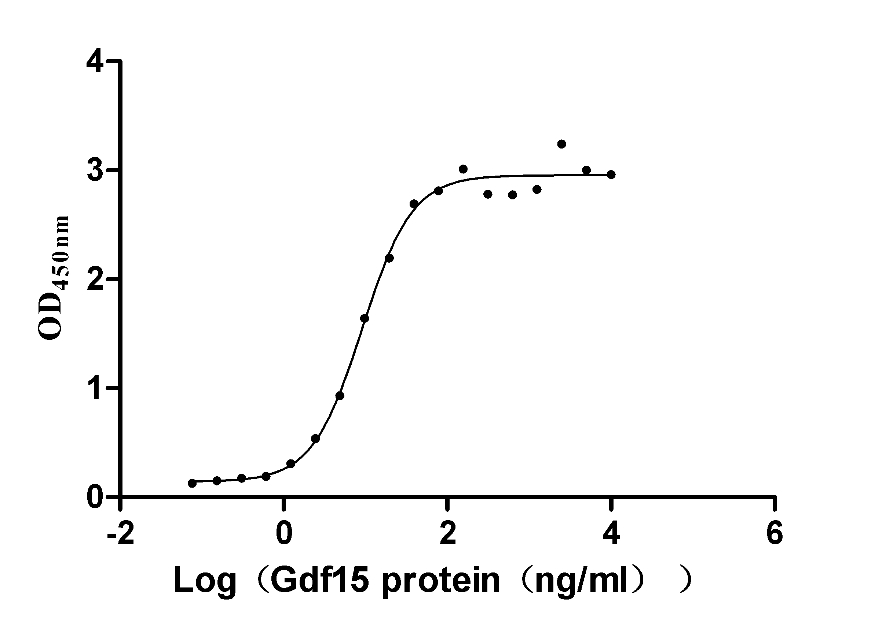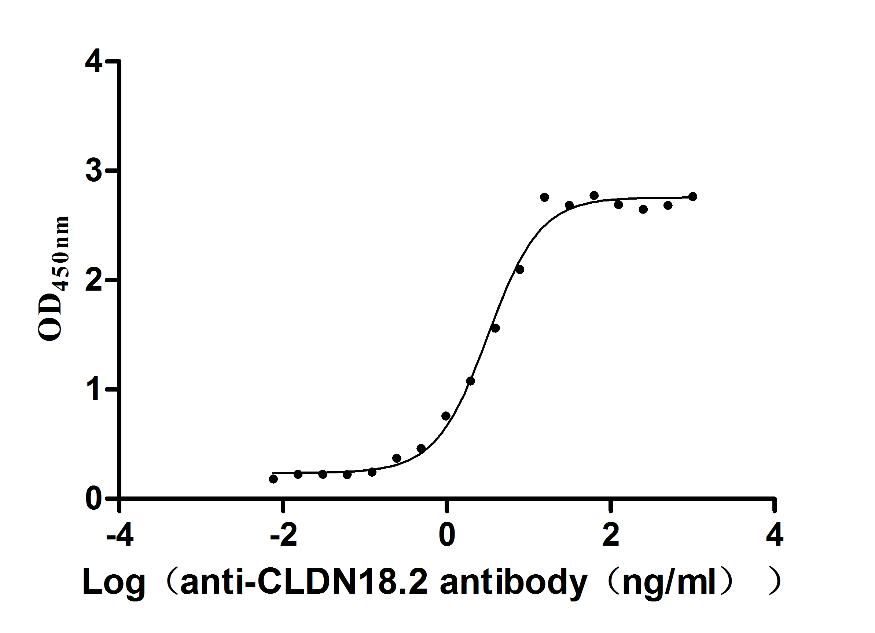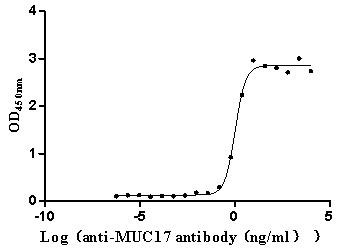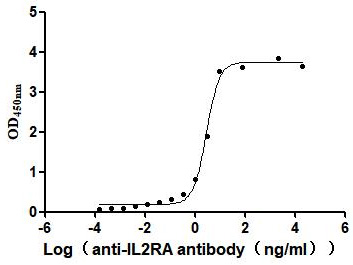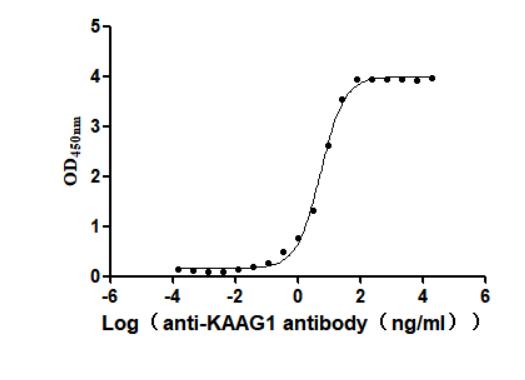Recombinant Rat Voltage-dependent T-type calcium channel subunit alpha-1H (Cacna1h), partial
-
中文名稱(chēng):Recombinant Rat Voltage-dependent T-type calcium channel subunit alpha-1H(Cacna1h) ,partial
-
貨號(hào):CSB-YP861675RA
-
規(guī)格:
-
來(lái)源:Yeast
-
其他:
-
中文名稱(chēng):Recombinant Rat Voltage-dependent T-type calcium channel subunit alpha-1H(Cacna1h) ,partial
-
貨號(hào):CSB-EP861675RA
-
規(guī)格:
-
來(lái)源:E.coli
-
其他:
-
中文名稱(chēng):Recombinant Rat Voltage-dependent T-type calcium channel subunit alpha-1H(Cacna1h) ,partial
-
貨號(hào):CSB-EP861675RA-B
-
規(guī)格:
-
來(lái)源:E.coli
-
共軛:Avi-tag Biotinylated
E. coli biotin ligase (BirA) is highly specific in covalently attaching biotin to the 15 amino acid AviTag peptide. This recombinant protein was biotinylated in vivo by AviTag-BirA technology, which method is BriA catalyzes amide linkage between the biotin and the specific lysine of the AviTag.
-
其他:
-
中文名稱(chēng):Recombinant Rat Voltage-dependent T-type calcium channel subunit alpha-1H(Cacna1h) ,partial
-
貨號(hào):CSB-BP861675RA
-
規(guī)格:
-
來(lái)源:Baculovirus
-
其他:
-
中文名稱(chēng):Recombinant Rat Voltage-dependent T-type calcium channel subunit alpha-1H(Cacna1h) ,partial
-
貨號(hào):CSB-MP861675RA
-
規(guī)格:
-
來(lái)源:Mammalian cell
-
其他:
產(chǎn)品詳情
-
純度:>85% (SDS-PAGE)
-
基因名:
-
Uniprot No.:
-
別名:Cacna1h; Voltage-dependent T-type calcium channel subunit alpha-1H; Voltage-gated calcium channel subunit alpha Cav3.2
-
種屬:Rattus norvegicus (Rat)
-
蛋白長(zhǎng)度:Partial
-
蛋白標(biāo)簽:Tag?type?will?be?determined?during?the?manufacturing?process.
The tag type will be determined during production process. If you have specified tag type, please tell us and we will develop the specified tag preferentially. -
產(chǎn)品提供形式:Lyophilized powder
Note: We will preferentially ship the format that we have in stock, however, if you have any special requirement for the format, please remark your requirement when placing the order, we will prepare according to your demand. -
復(fù)溶:We recommend that this vial be briefly centrifuged prior to opening to bring the contents to the bottom. Please reconstitute protein in deionized sterile water to a concentration of 0.1-1.0 mg/mL.We recommend to add 5-50% of glycerol (final concentration) and aliquot for long-term storage at -20℃/-80℃. Our default final concentration of glycerol is 50%. Customers could use it as reference.
-
儲(chǔ)存條件:Store at -20°C/-80°C upon receipt, aliquoting is necessary for mutiple use. Avoid repeated freeze-thaw cycles.
-
保質(zhì)期:The shelf life is related to many factors, storage state, buffer ingredients, storage temperature and the stability of the protein itself.
Generally, the shelf life of liquid form is 6 months at -20°C/-80°C. The shelf life of lyophilized form is 12 months at -20°C/-80°C. -
貨期:Delivery time may differ from different purchasing way or location, please kindly consult your local distributors for specific delivery time.Note: All of our proteins are default shipped with normal blue ice packs, if you request to ship with dry ice, please communicate with us in advance and extra fees will be charged.
-
注意事項(xiàng):Repeated freezing and thawing is not recommended. Store working aliquots at 4°C for up to one week.
-
Datasheet :Please contact us to get it.
靶點(diǎn)詳情
-
功能:Voltage-sensitive calcium channel that gives rise to T-type calcium currents. T-type calcium channels belong to the 'low-voltage activated (LVA)' group. A particularity of this type of channel is an opening at quite negative potentials, and a voltage-dependent inactivation. T-type channels serve pacemaking functions in both central neurons and cardiac nodal cells and support calcium signaling in secretory cells and vascular smooth muscle (Probable). They may also be involved in the modulation of firing patterns of neurons. In the adrenal zona glomerulosa, participates in the signaling pathway leading to aldosterone production in response to either AGT/angiotensin II, or hyperkalemia.
-
基因功能參考文獻(xiàn):
- There is a role for CaV3.2 channels in propagating thalamocortical network seizures and in setting the pacemaking frequency of spike-wave discharges. PMID: 29468672
- CaV3.2 T-type calcium channels in damaged medium-sized dorsal root ganglion neurons might contribute to neuropathic pain after peripheral nerve injury. PMID: 29592785
- (Cav3.2) The percentage of small dorsal root ganglion neurons with Cav3.2 mRNA level is significantly increased in diabetic rats compared with those in control rats. PMID: 21883220
- This study demonstrated that Cav3.2 in concert with TLR4 in DRG neurons appears to contribute to paclitaxel-induced neuropathy. PMID: 27902567
- Hypoxia induces the upregulation of Cav3.2 mRNA in cardiac myocytes via HIF1a signaling. PMID: 26331302
- The I-II loop of the Cav3.2 protein inhibits neuronal Cav3.1 and Cav3.2 channels. PMID: 25931121
- This study demonstrates that different colonies of GAERS and NEC had significantly different seizure characteristics, and carrying the same genetic mutation in CaV3.2. PMID: 25377760
- Hypoxia-induced Cacna1h upregulation involves binding of hypoxia-inducible factor to an HRE within the Cacna1h promoter region. PMID: 25099734
- The mechanisms of CaV3.2 T-type channel modulation by S-nitrosothiols, were investigated. PMID: 23813099
- CaV3.2 expression within the soma and peripheral axons of nociceptive sensory neurons further demonstrates the importance of this channel in peripheral pain transmission PMID: 23867767
- Cav3.2 regulates calcineurin/NFAT pathway through both the Ca(2+) influx and calcineurin binding PMID: 23669360
- the opening of Cav3.2 channels during ischemia contribute to the entry of Ca(2+) ions that are transmitted to mitochondria, resulting in a deleterious mitochondrial Ca(2+) overload. PMID: 23508951
- A novel presynaptic role of CaV3.2 T-type channels is found for spontaneous excitatory synaptic transmission in diabetic rats in the dorsal horn of the spinal cord. PMID: 22764245
- paclitaxel-evoked neuropathic pain might involve the enhanced activity of T-type calcium channels such as Ca(v)3.2 PMID: 21596106
- T-type calcium channels encoded by the Ca(V)3.2 isoform are expressed in colonic nociceptive primary afferent neurons and they contribute to the exaggerated pain perception in a butyrate-mediated model of irritable bowel syndrome PMID: 21690417
- Present evidence that N2O-based inhibition of Cav3.2 channels is mediated by free radical signalling and results in analgesia. PMID: 21059758
- Ca(v)3.2 T-type Ca(2+) channels in sensory neurons are upregulated and activated/sensitized by cystathionine-gamma-lyase-derived endogenous H(2)S after spinal nerve injury, contributing to the maintenance of neuropathic pain. PMID: 20546998
- analysis of the determinants of the high affinity extracellular zinc binding site on Cav3.2 T-type calcium channels PMID: 19940152
- Activation of native 5-HT7 receptors stimulates cAMP formation, which in turn provokes calcium influx through T-type calcium channels. Both activation of AC/PKA pathway and calcium influx are involved in 5-HT-induced aldosterone secretion. PMID: 12530678
- Ca(v)3.2 has a role in calcium influx during physiological activation and mutations may be causative in the propensity for seizures in patients with childhood absence epilepsy PMID: 14729682
- results provide direct evidence linking CaV3.2 T-type channels to pain perception and suggest that CaV3.2 may offer a specific molecular target for the treatment of pain. PMID: 15616581
- Our findings directly demonstrate that Ca(V)3.2 channels are the main molecular substrate for redox regulation of neuronal T-type channels. PMID: 16644797
- Following chronic hypoxia, most chromaffin cells exhibited T-type Ca(2+) channels already available at -50 mV with the same gating, pharmacological and molecular features as the alpha(1H) isoform. PMID: 17690152
- 17 beta-estradiol modulates expression of low-voltage-activated Ca(V)3.2 T-type calcium channel via extracellularly regulated kinase pathway in cardiomyocytes. PMID: 18832095
- This study provides the first mechanistic demonstration of a nociceptive ion channel (Ca(V)3.2) modulation that may contribute to the documented analgesic properties of lipoic acid in vivo. PMID: 19641113
顯示更多
收起更多
-
亞細(xì)胞定位:Cell membrane; Multi-pass membrane protein.
-
蛋白家族:Calcium channel alpha-1 subunit (TC 1.A.1.11) family, CACNA1H subfamily
-
組織特異性:Expressed in brain.
-
數(shù)據(jù)庫(kù)鏈接:
Most popular with customers
-
Recombinant Mouse GDNF family receptor alpha-like (Gfral), partial (Active)
Express system: Mammalian cell
Species: Mus musculus (Mouse)
-
Recombinant Macaca fascicularis Claudin 18.2 (CLDN18.2)-VLPs (Active)
Express system: Mammalian cell
Species: Macaca fascicularis (Crab-eating macaque) (Cynomolgus monkey)
-
Recombinant Human Mucin-17 (MUC17), partial (Active)
Express system: Mammalian cell
Species: Homo sapiens (Human)
-
Express system: Mammalian cell
Species: Homo sapiens (Human)
-
Recombinant Human Interleukin-2 receptor subunit alpha (IL2RA), partial (Active)
Express system: Mammalian cell
Species: Homo sapiens (Human)
-
Recombinant Human Transmembrane 4 L6 family member 1(TM4SF1)-VLPs (Active)
Express system: Mammalian cell
Species: Homo sapiens (Human)
-
Recombinant Human Kidney-associated antigen 1(KAAG1) (Active)
Express system: Baculovirus
Species: Homo sapiens (Human)


